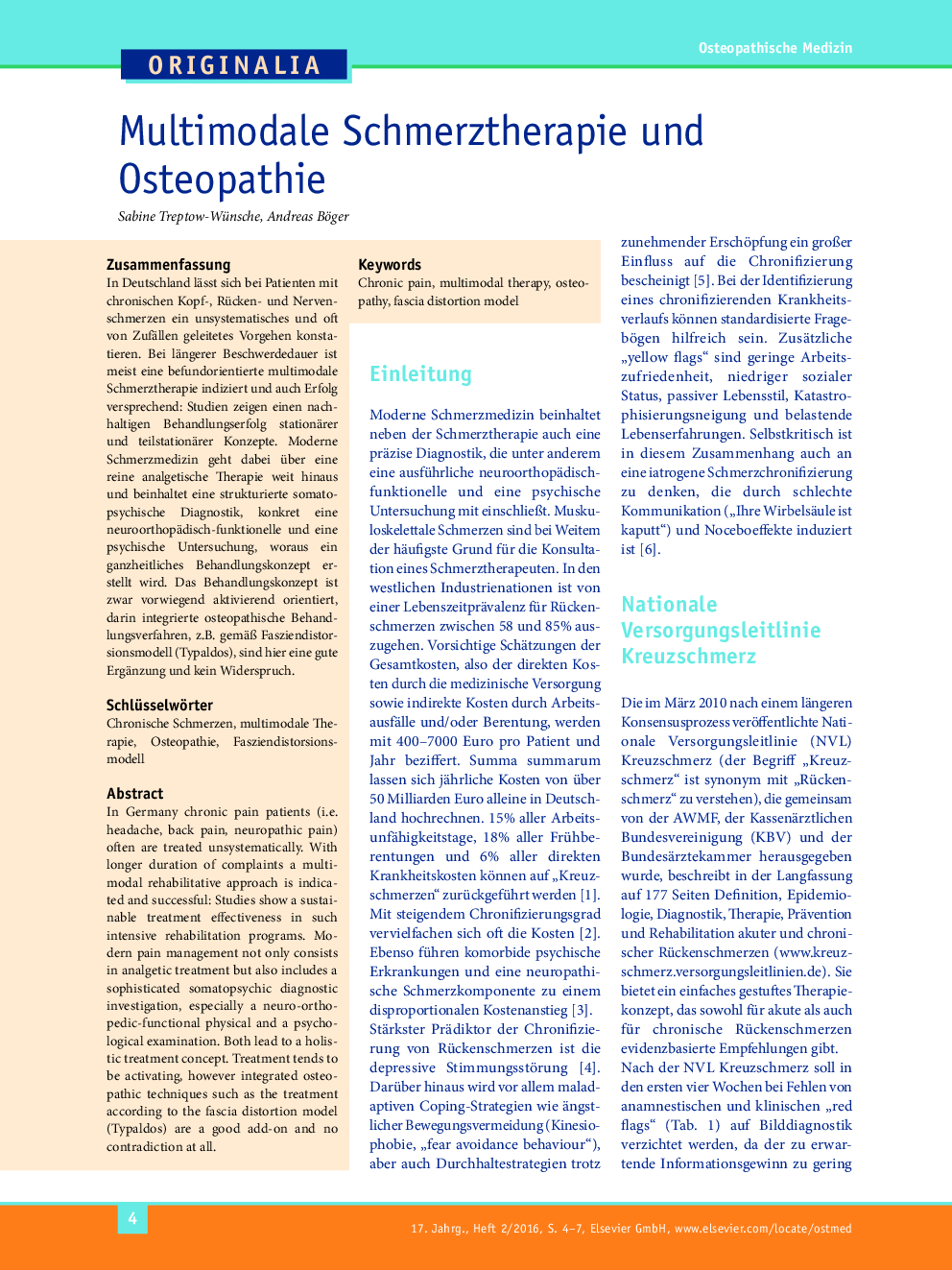| Article ID | Journal | Published Year | Pages | File Type |
|---|---|---|---|---|
| 2626164 | Osteopathische Medizin | 2016 | 4 Pages |
ZusammenfassungIn Deutschland lässt sich bei Patienten mit chronischen Kopf-, Rücken- und Nervenschmerzen ein unsystematisches und oft von Zufällen geleitetes Vorgehen konstatieren. Bei längerer Beschwerdedauer ist meist eine befundorientierte multimodale Schmerztherapie indiziert und auch Erfolg versprechend: Studien zeigen einen nachhaltigen Behandlungserfolg stationärer und teilstationärer Konzepte. Moderne Schmerzmedizin geht dabei über eine reine analgetische Therapie weit hinaus und beinhaltet eine strukturierte somatopsychische Diagnostik, konkret eine neuroorthopädisch-funktionelle und eine psychische Untersuchung, woraus ein ganzheitliches Behandlungskonzept erstellt wird. Das Behandlungskonzept ist zwar vorwiegend aktivierend orientiert, darin integrierte osteopathische Behandlungsverfahren, z.B. gemäß Fasziendistorsionsmodell (Typaldos), sind hier eine gute Ergänzung und kein Widerspruch.
In Germany chronic pain patients (i.e. headache, back pain, neuropathic pain) often are treated unsystematically. With longer duration of complaints a multimodal rehabilitative approach is indicated and successful: Studies show a sustainable treatment effectiveness in such intensive rehabilitation programs. Modern pain management not only consists in analgetic treatment but also includes a sophisticated somatopsychic diagnostic investigation, especially a neuro-orthopedic-functional physical and a psychological examination. Both lead to a holistic treatment concept. Treatment tends to be activating, however integrated osteopathic techniques such as the treatment according to the fascia distortion model (Typaldos) are a good add-on and no contradiction at all.
